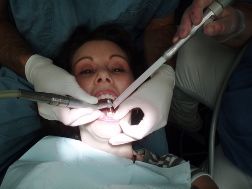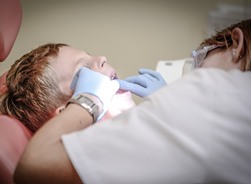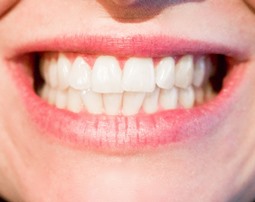How to Enroll In a Dental Hygienist Program near Cold Spring Minnesota
 Choosing the right dental hygienist program near Cold Spring MN is an essential initial step toward launching your new career in dentistry. But prior to making your choice, you need to assess and compare your school options. There is much more to completing your due diligence than choosing the training with the most affordable tuition or enrolling in the program that is nearest to your residence. There are other crucial issues to consider as well, for instance the college’s accreditation and reputation. Dental hygienists usually earn an Associate Degree, as compared to a certificate usually earned by assistants, and can take anywhere from 2 to 3 years to accomplish. Obviously with the prolonged training of a hygienist comes more expense. We will talk about all of these considerations and supplemental questions that you should be asking the dental hygienist programs you are looking at later in this article. But first, let’s explore the duties of dental hygienists and the training programs available.
Choosing the right dental hygienist program near Cold Spring MN is an essential initial step toward launching your new career in dentistry. But prior to making your choice, you need to assess and compare your school options. There is much more to completing your due diligence than choosing the training with the most affordable tuition or enrolling in the program that is nearest to your residence. There are other crucial issues to consider as well, for instance the college’s accreditation and reputation. Dental hygienists usually earn an Associate Degree, as compared to a certificate usually earned by assistants, and can take anywhere from 2 to 3 years to accomplish. Obviously with the prolonged training of a hygienist comes more expense. We will talk about all of these considerations and supplemental questions that you should be asking the dental hygienist programs you are looking at later in this article. But first, let’s explore the duties of dental hygienists and the training programs available.
[campusexplorer header_text=”Find Dental Hygienist Schools Near You!” aos=”75346615″ concentration=”2D77CE61″ tracking=”DENTHYG”]
The Function of a Dental Hygienist
 When comparing the duties of a dental hygienist to that of an assistant, the main difference is undoubtedly that the hygienist works more on their own. Dental assistants work with and assists the Cold Spring MN dentists and the practice. Hygienists, while also assisting the practice, work with the patients more on a one-to-one basis. They are typically the initial person a patient interacts with when called from the waiting room. They examine every patient’s teeth and gums and present their results to the dentists. They may also perform basic procedures. Based on state law, a hygienist’s duties may include:
When comparing the duties of a dental hygienist to that of an assistant, the main difference is undoubtedly that the hygienist works more on their own. Dental assistants work with and assists the Cold Spring MN dentists and the practice. Hygienists, while also assisting the practice, work with the patients more on a one-to-one basis. They are typically the initial person a patient interacts with when called from the waiting room. They examine every patient’s teeth and gums and present their results to the dentists. They may also perform basic procedures. Based on state law, a hygienist’s duties may include:
- Removing tartar, stains and plaque
- Administering fluoride treatments
- Applying sealants and polishing teeth
- Educating patients regarding oral hygiene
- Taking X-rays and developing film
- Applying fillings and removing sutures
To qualify for licensing in nearly all states, dental hygienists must graduate from a Commission on Dental Accreditation (CDA) accredited dental hygiene program. They also must pass the National Board Dental Hygiene Exam in addition to passing any state licensure exams. Once they have fulfilled these requirements they are deemed fully licensed and can add the “RDH” designation to their names, signifying Registered Dental Hygienist.
Dental Hygienist Education Options
Due to the added responsibility in contrast to an assistant, dental hygienists working in Cold Spring MN dental offices are normally required to have an Associate Degree in dental hygiene rather than a certificate. These programs can require anywhere from two to as long as three years to complete and must be accredited by the CDA in nearly every state. They are offered in trade and vocational schools as well as community colleges. And in addition to classroom studies learning the fundamentals of dental hygiene, there will be a clinical aspect to the training as well| Some programs also sponsor internships with local dental practices or dentists.
Dental Hygienist Online Training
 Choosing an online dental hygienist school might be a viable alternative for receiving your education. Just keep in mind that the classes will not be totally online, since there will be a clinical portion to your training. But the remainder of your classes will be provided via your personal computer in the convenience of your Cold Spring MN home or anywhere else on your laptop or tablet. For those continuing to work while attending college, online dental classes make education far more accessible. Many may even offer lower tuition fees than their on-campus competitors. And additional expenses for items like commuting, books and school supplies may be lessened also. The practical training can usually be completed at a community dental office or in an on-campus lab. With both the online and clinical training, everything needed to obtain the proper education is furnished. If you have the discipline for this method of learning, you might find that attending an dental hygienist online school is the best option for you.
Choosing an online dental hygienist school might be a viable alternative for receiving your education. Just keep in mind that the classes will not be totally online, since there will be a clinical portion to your training. But the remainder of your classes will be provided via your personal computer in the convenience of your Cold Spring MN home or anywhere else on your laptop or tablet. For those continuing to work while attending college, online dental classes make education far more accessible. Many may even offer lower tuition fees than their on-campus competitors. And additional expenses for items like commuting, books and school supplies may be lessened also. The practical training can usually be completed at a community dental office or in an on-campus lab. With both the online and clinical training, everything needed to obtain the proper education is furnished. If you have the discipline for this method of learning, you might find that attending an dental hygienist online school is the best option for you.
Topics to Cover With Dental Hygienist Colleges
 Now that you have decided to become a dental hygienist in Cold Spring MN, you can start the procedure of comparing schools and programs. As we discussed at the opening of this article, many prospective students begin by looking at the cost and the location of the colleges. Possibly they look for some online alternatives as well. Although these may be significant initial points to consider, there are a few additional questions that you should ask of the programs you are looking at in order to reach an informed decision. To start that process, we have furnished a list of questions to assist you with your due diligence and final selection of the best dental hygienist school for you.
Now that you have decided to become a dental hygienist in Cold Spring MN, you can start the procedure of comparing schools and programs. As we discussed at the opening of this article, many prospective students begin by looking at the cost and the location of the colleges. Possibly they look for some online alternatives as well. Although these may be significant initial points to consider, there are a few additional questions that you should ask of the programs you are looking at in order to reach an informed decision. To start that process, we have furnished a list of questions to assist you with your due diligence and final selection of the best dental hygienist school for you.
Is the Dental Program Accredited? There are many good reasons why you should only enroll in an accredited dental hygienist program. If you are planning to become certified or licensed, then accreditation is a requirement in almost all states. To qualify to take the National Board Dental Hygiene Exam, your dental school must be accredited by the Commission on Dental Accreditation (CDA). Accreditation also helps guarantee that the education you get is comprehensive and of the highest quality. Cold Spring MN employers typically desire or require that new hires are graduates of accredited programs. And last, if you are applying for financial aid or a student loan, often they are not obtainable for non-accredited colleges.
Is Plenty of Clinical Training Provided? Clinical or practical training is a vital component of any dental training program. This holds true for the online school options as well. Many dental hygienist schools have relationships with area dental practices and clinics that provide practical training for their students. It’s not only essential that the program you select provides sufficient clinical hours but also provides them in the kind of practice that you ultimately want to work in. For example, if you have an interest in a career in pediatric dentistry, make sure that the college you select offers clinical rotation in a local Cold Spring MN dental office that focuses on dental services for children.
Is There an Internship Program? Ask if the dental programs you are looking at have an internship program. Internships are probably the most effective way to get hands-on, clinical experience in a real dental practice. They help students to transition from the theoretical to the practical. They can also help students develop working relationships in the professional dental community. And they look good on resumes too.
Is Job Placement Assistance Offered? Many graduating students of dental hygienist colleges need help getting their first job. Check if the programs you are reviewing have job assistance programs, and what their job placement rates are. Colleges with higher job placement rates are likely to have good reputations within the Cold Spring MN dental profession in addition to large networks of contacts where they can place their students for internships or employment.
Are the Classes Smaller? Ask the colleges you are evaluating how big typically their classrooms are. The smaller classes usually provide a more intimate environment for learning where students have greater access to the instructors. Conversely, bigger classes tend to be impersonal and offer little one-on-one instruction. If practical, find out if you can attend a few classes at the Cold Spring MN dental hygienist college that you are most interested in in order to experience first hand the amount of interaction between instructors and students before making a commitment.
What is the Overall Cost of the Program? Dental hygiene programs can vary in cost based on the length of the program and the amount of clinical training provided. Other factors, for instance the reputations of the schools and if they are public or private also come into play. But in addition to the tuition there are other significant costs which can add up. They can include expenses for such things as textbooks and commuting as well as school equipment, materials and supplies. So when examining the cost of colleges, remember to include all of the expenses associated with your education. The majority of colleges have financial aid departments, so be sure to ask what is available as far as loans, grants and scholarships in the Cold Spring MN area.
Are the Classes Convenient? Before enrolling in a dental hygienist college, you need to make sure that the hygienist or assistant program furnishes classes that accommodate your schedule. This is particularly true if you will be working while acquiring your education and must attend classes near Cold Spring MN in the evenings or on weekends. And even if you enroll in an online school, you will still have to schedule your practical training classes. Also, while addressing your concerns, ask what the make-up protocol is if you should have to miss any classes because of work, illness or family issues.
Attending Dental Hygienist School near Cold Spring MN?
Cold Spring, Minnesota
As of the census[2] of 2010, there were 4,025 people, 1,549 households, and 1,049 families residing in the city. The population density was 1,507.5 inhabitants per square mile (582.0/km2). There were 1,641 housing units at an average density of 614.6 per square mile (237.3/km2). The racial makeup of the city was 94.2% White, 0.2% African American, 0.2% Native American, 0.2% Asian, 0.1% Pacific Islander, 3.9% from other races, and 1.0% from two or more races. Hispanic or Latino of any race were 7.1% of the population.
There were 1,549 households of which 36.6% had children under the age of 18 living with them, 53.6% were married couples living together, 10.1% had a female householder with no husband present, 4.0% had a male householder with no wife present, and 32.3% were non-families. 27.8% of all households were made up of individuals and 16.4% had someone living alone who was 65 years of age or older. The average household size was 2.54 and the average family size was 3.11.
The median age in the city was 36.7 years. 27.7% of residents were under the age of 18; 6.5% were between the ages of 18 and 24; 26.4% were from 25 to 44; 20.4% were from 45 to 64; and 19% were 65 years of age or older. The gender makeup of the city was 48.3% male and 51.7% female.
As of the census[4] of 2000, there were 2,975 people, 1,116 households, and 785 families residing in the city. The population density was 1,431.1 people per square mile (552.2/km²). There were 1,145 housing units at an average density of 550.8 per square mile (212.5/km²). The racial makeup of the city was 98.39% White, 0.20% African American, 0.07% Native American, 0.20% Asian, 0.71% from other races, and 0.44% from two or more races. Hispanic or Latino of any race were 1.34% of the population.
Pick the Best Dental Hygienist School near Cold Spring MN
Choosing the ideal dental hygienist course is crucial if you wish to take the National Board Dental Hygiene examination or, if mandated in your state, become licensed. As we have covered, there are a number of options offered to acquire your training and it takes a fairly short period of time to become a dental hygienist. You can obtain your formal training through dental programs at junior colleges, technical institutes, trade schools and vocational schools. Graduates of these programs generally earn an Associate Degree. Dental Hygienists generally require roughly two years of studies prior to entering the work force. When pursuing a degree you can elect to go to classes online or on-campus. Whichever mode of training you elect to pursue, by asking the questions provided in this article you will be in a better position to make the right selection. And as a result, you will be ready to commence your journey toward becoming a dental hygienist in Cold Spring MN.
More Great Cities in Minnesota
Business Results 1 - 10 of 6








